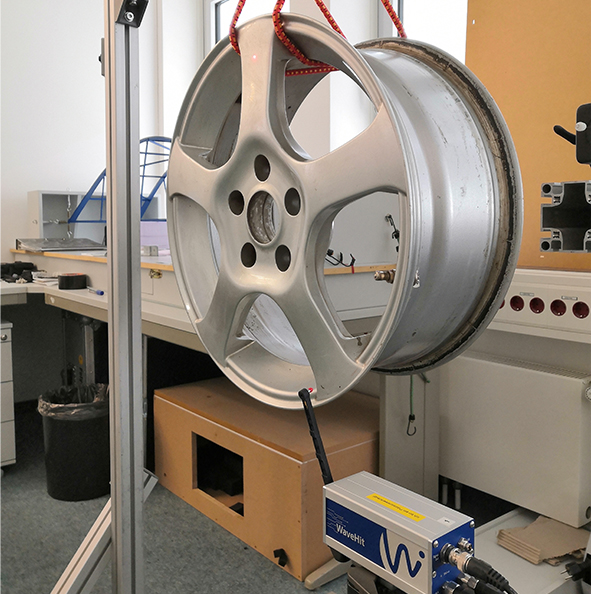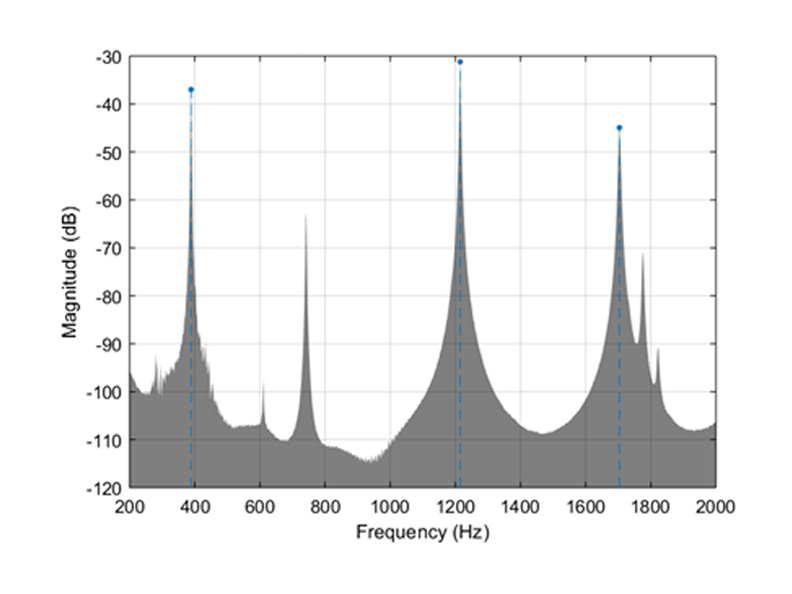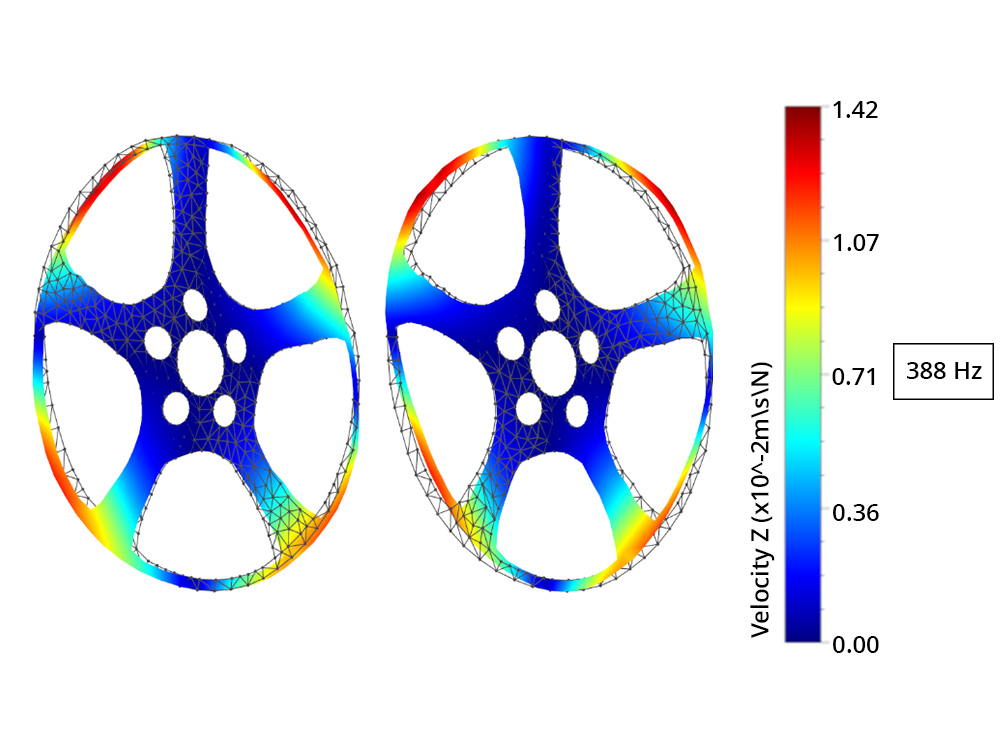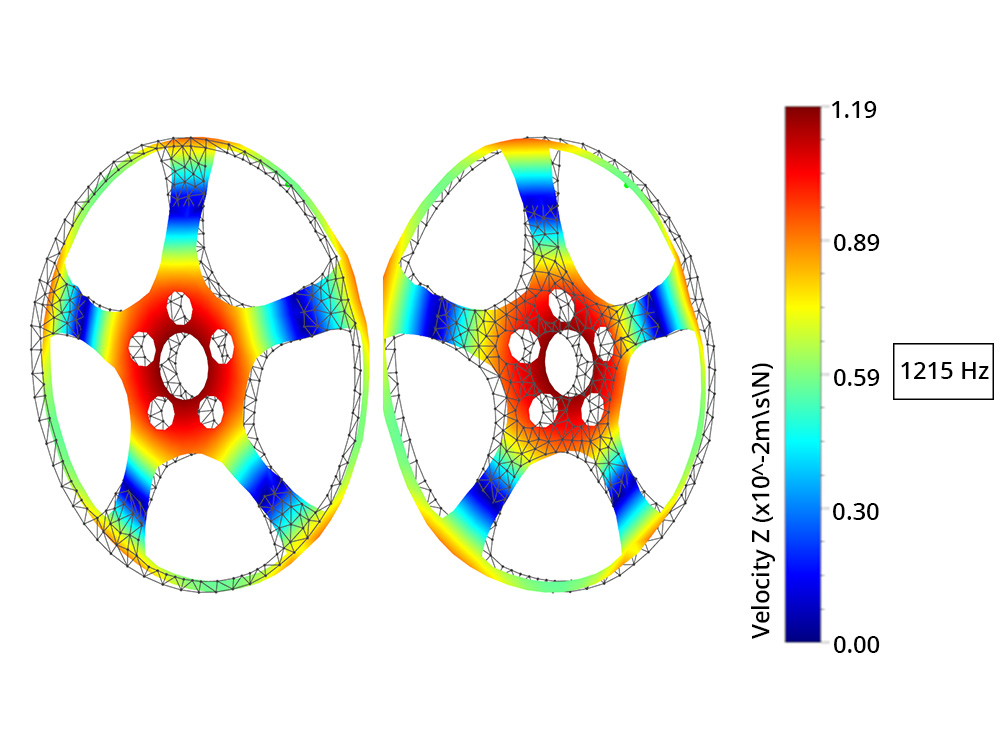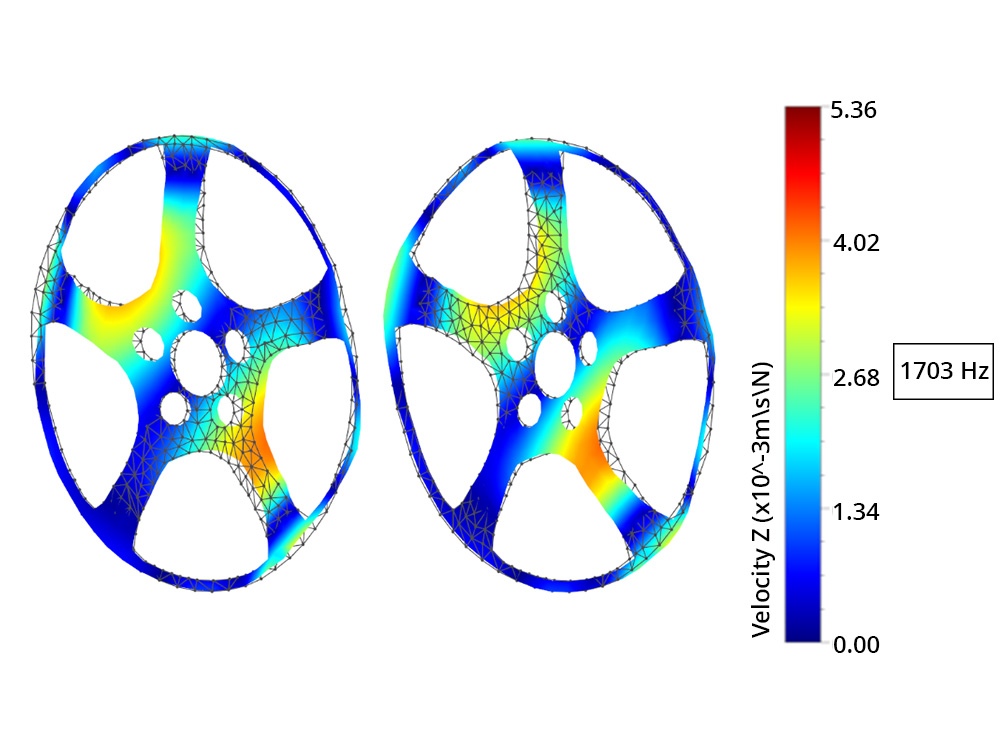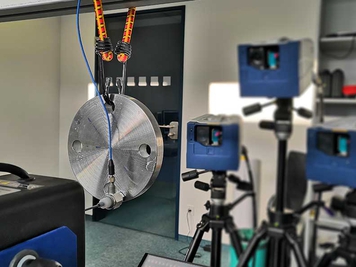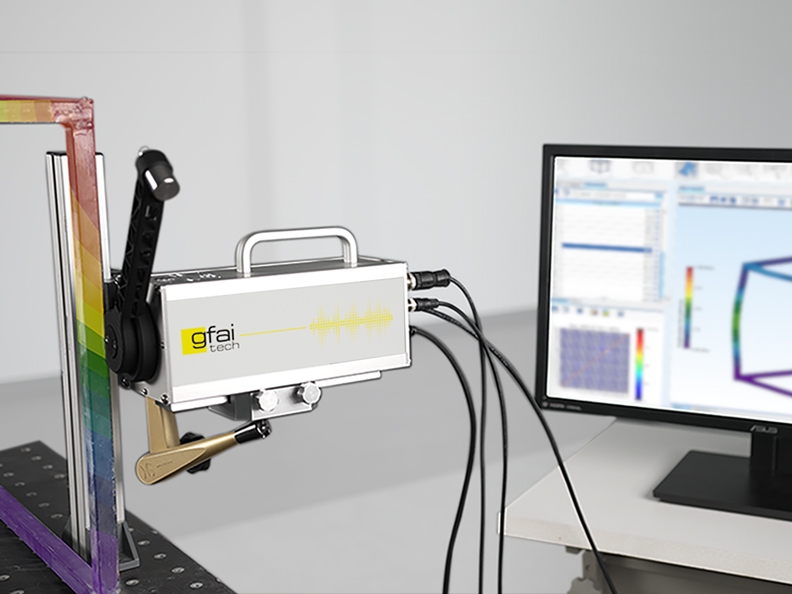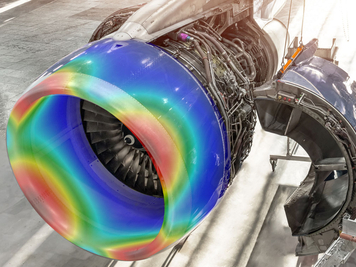In the experimental setup, the car rim was elastically mounted and aligned. A wideband impulse excitation of the system was performed by an automatic modal hammer at the outer lower edge of the rim. The resulting system response was recorded via a laser scanning vibrometer (LSV). This is a non-contact measurement method which, thanks to its scanner unit, also provides an automated scan of the structural surface over any number of measurement points. In this series of measurements, more than 400 measuring points were selected to achieve a high local resolution and to ensure a high quality of the result.
From the measured vibration response of the structure, the structural mechanical natural frequencies (Figure 2) were determined using the CMIF algorithm. The corresponding natural mode shapes are shown in Figure 3-1, 3-2 and 3-3.
The successful completion of the EMA provides the modal parameters of the investigated car rim, an important information to avoid e.g. operationally critical or also acoustically unfavorable vibrations of the structure during operation.

